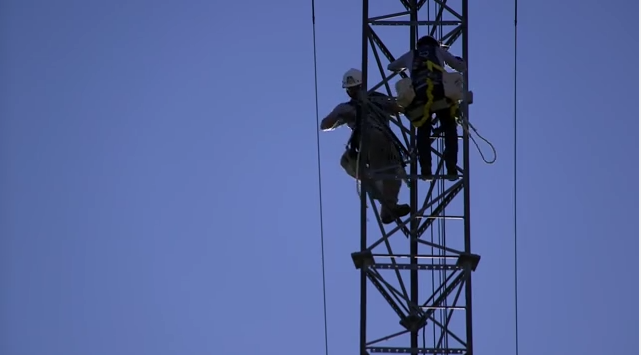Spectrum Repack Quietly Concludes
While some clean-up remains, the massive task ends with viewers and stations better off long term

WASHINGTON—Phase 10 of the FCC’s TV spectrum repack that saw nearly 1,000 full-power and Class A television stations changing channel assignments ended July 3, bringing to a close the 39-month project—sort of.
Some stations, such as WFOX-TV, the Cox Television station licensed to Jacksonville, Fla., received an extension from the FCC to delay completion of their moves. Many others, especially stations in Phases 9 and 10 completed their move using interim facilities and side-mount antennas.
A review of the FCC’s Licensing and Management Systems reveals more than 40 requests for technical-related Special Temporary Authority (STA) by or on behalf of Full-Service Television licensees to operate from interim facilities, with reduced or alternate parameters (i.e. lower power), or with some other variance to enable stations to stay on air while awaiting installation and commissioning of their final facilities.
Some distributed Transmission Service broadcasters and Class A stations filed similar requests for STAs but in fewer numbers, according to the FCC’s LMS records.
STAs were “an effective tool” in enabling the repack to stay on schedule, says Brett Jenkins, CTO of Nexstar, the nation’s largest commercial broadcaster. Jenkins estimates that as many as 90% of the more than 100 TV stations the group repacked relied on interim facilities to stay on air while permanent antennas, waveguide and transmitters were installed.
“Were we happy about operating at lower heights and lower powers? Probably not,” says Jenkins. “But I think in most cases we were able to find adequate designs that would come reasonably close to replicating coverage. We tried not to disenfranchise the over-the-air viewer as much as possible.”
Joe Davis, a consulting engineer and president of Chesapeake RF Consultants, says most of the 120 stations he worked with on the repack relied on STAs to operate from interim facilities at some point—often to sidestep a shortage of tower crews to remove old antennas and transmission lines and install new ones.
Get the TV Tech Newsletter
The professional video industry's #1 source for news, trends and product and tech information. Sign up below.
“We were short on tower crews and that has aggravated the situation with the final operations,” says Davis, who co-authored the 2013 Widelity Report looking at the anticipated challenges and costs of the repack. “I have clients who were able to get their tower crew and install their interim antenna, and they were able to affect the cut-over with that, but then they had to wait for that crew or another crew to come back and do the final antenna.”
While viewers in the fringe of coverage may have suffered, broadcasters and consultants interviewed for this article report that operations from interim facilities effectively covered viewers in their stations’ DMAs or those of their clients.
Further, the repack gave broadcasters an opportunity to maximize coverage from their permanent facilities, meaning that in the long run viewers will be better off than they were prior to the repack.
“In all cases, we tried to maximize our clients’ coverage area because their pre-transition facility may have been boxed in on an existing frequency,” says Ryan Wilhour, consulting engineer at Kessler and Gehman Engineering Associates.
“But the whole world got shook up. Everything got shuffled, so there were new opportunities. I would say that is a gain in the market for everybody, especially in rural areas.”
Longer-term, the most important effect of the repack may be how it positions stations to launch ATSC 3.0 service at some point in the future. While qualifying repack expense reimbursement requests were limited to like technology, many stations chose to pay up-charges to add capabilities, such as vertical or elliptical polarization to their new antennas, that better position them for NextGen TV service. Many also replaced tube transmitters with modern solid state models with software upgradeable exciters that can easily be converted to 3.0.
Gray Television is among the broadcasters that used the repack as an opportunity to get ready for 3.0, says Robert Folliard III, senior vice president, Government Relations & Distribution at the station group. “Absolutely [the repack was a chance to prepare for 3.0]. That was part of the strategy,” he says.
“As soon as we were given our repack assignments and told which stations had to do what and when, the very next question was how can we make this better? How do we future-proof this? What else can we do with this?” he says.
While the scope and demanding schedule of the repack caused many in the broadcast industry to be skeptical of the undertaking, overall the effort has been a success, says Jenkins.
“My hat’s off and thanks to the FCC Media Bureau because I think this really could have been a disaster had they not had some ability to be flexible, extend certain deadlines [and] move stations from one phase to another,” says Jenkins. “I think the flexibility, the liberal use of granting STAs, all of those tools I think made this happen.”
Phil Kurz is a contributing editor to TV Tech. He has written about TV and video technology for more than 30 years and served as editor of three leading industry magazines. He earned a Bachelor of Journalism and a Master’s Degree in Journalism from the University of Missouri-Columbia School of Journalism.

